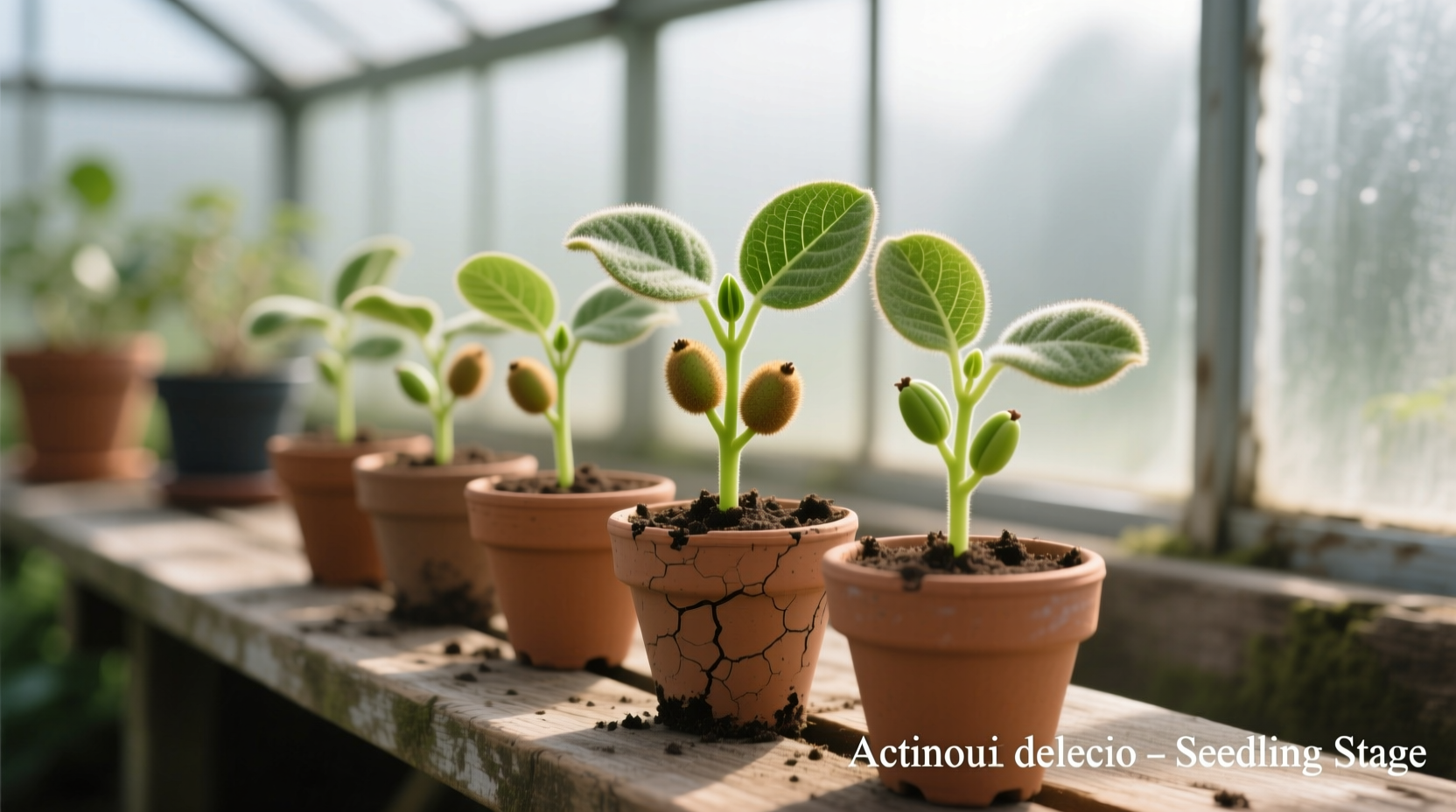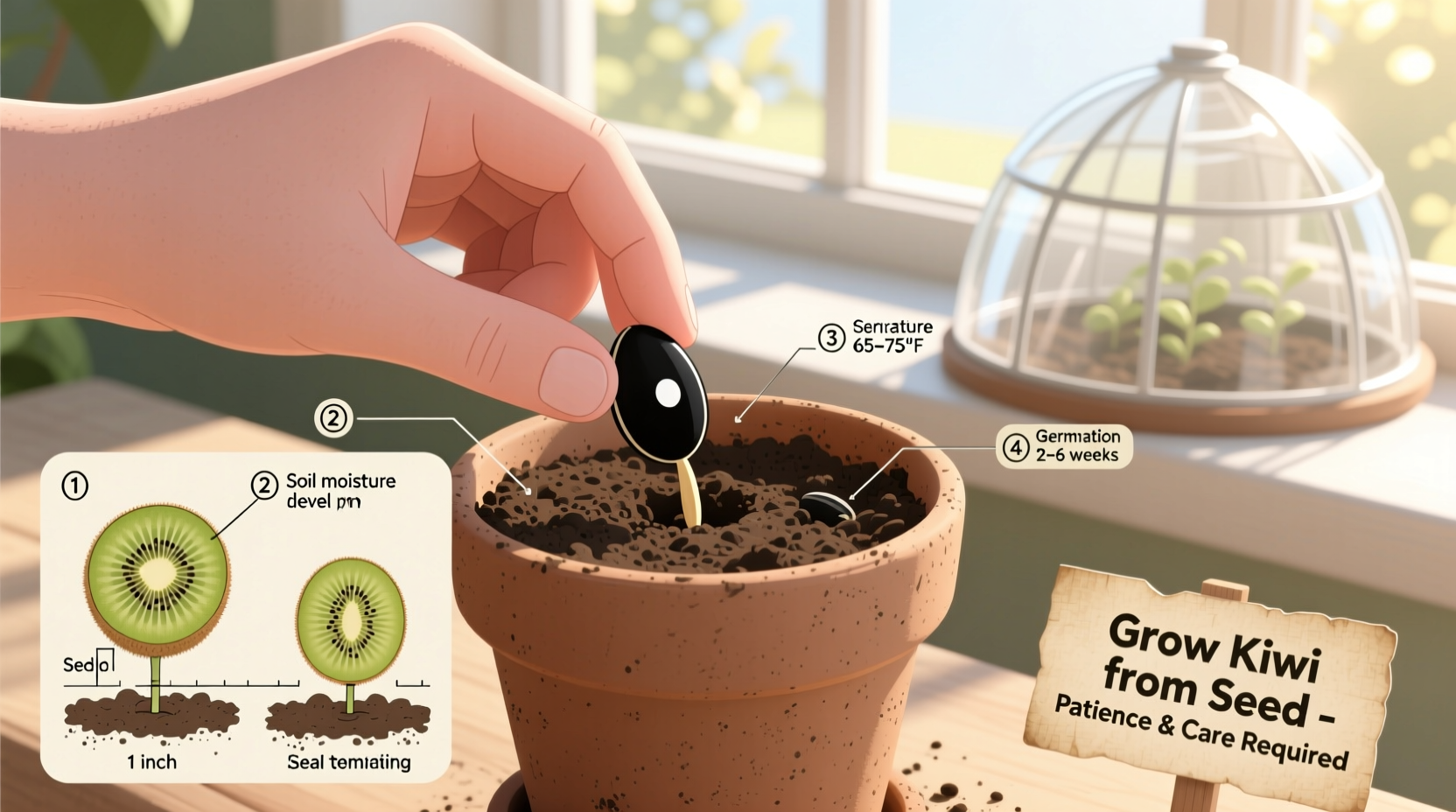Yes, you can successfully grow kiwi from seed with proper technique. It takes 3-4 weeks for germination, 3-5 years to reach maturity, and 5-7 years to produce fruit. Seed-grown plants require both male and female vines for pollination, and while they may not produce identical fruit to the parent plant, they make excellent ornamental vines with proper care.
Have you ever wondered if you could grow your own kiwi vine from the seeds of that store-bought fruit? Many gardeners assume kiwi plants must be purchased as established vines, but with the right approach, you can grow vibrant kiwi plants from seed for a fraction of the cost. This comprehensive guide reveals the exact process I've refined through years of hands-on experience growing kiwi from seed.
Why Growing Kiwi from Seed Is Worth the Effort
While commercial kiwi growers typically use grafted plants for consistent fruit quality, growing from seed offers unique advantages. Seed-grown kiwi plants develop stronger root systems, adapt better to local conditions, and provide an incredibly rewarding gardening experience. The vibrant green foliage creates beautiful ornamental coverage for trellises, and with patience, you'll be harvesting your own homegrown kiwi fruit.
| Growing Method | Time to Fruit | Fruit Quality | Cost |
|---|---|---|---|
| From Seed | 5-7 years | Variable (may differ from parent) | $ (seeds only) |
| Nursery Plant | 2-3 years | Guaranteed variety | $$-$$$ |
| Grafted Plant | 1-2 years | Consistent with parent | $$$ |
Your Step-by-Step Kiwi Seed Growing Timeline
Phase 1: Seed Extraction and Preparation (Weeks 1-2)
Start with fresh kiwi fruit from your local market. Scoop out the tiny black seeds surrounded by gelatinous pulp. Contrary to popular belief, you don't need to ferment kiwi seeds like tomato seeds. Simply rinse them thoroughly under running water using a fine mesh strainer until all pulp is removed.
For best germination results, kiwi seeds require cold stratification. Place the cleaned seeds on a damp paper towel, fold it over, and put it in a sealed plastic bag. Store this in your refrigerator for 3-4 weeks. This mimics winter conditions and breaks seed dormancy, significantly improving germination rates according to research from the Oregon State University Extension Service.
Phase 2: Germination Process (Weeks 3-5)
After stratification, plant your kiwi seeds in seed starting mix. Press them gently onto the soil surface (they need light to germinate) and mist with water. Maintain consistent moisture—not soggy, but never allowed to dry out. Keep the container in a warm location (70-75°F/21-24°C) with bright, indirect light.
Germination typically occurs within 2-3 weeks. The Royal Horticultural Society notes that kiwi seeds have variable germination rates, so plant more seeds than you need. Once seedlings emerge, provide 14-16 hours of light daily using grow lights positioned 6 inches above the plants.

Phase 3: Seedling Care and Transplanting (Months 2-6)
When your kiwi seedlings develop their second set of true leaves, transplant them into individual 4-inch pots using well-draining potting mix. Kiwi plants prefer slightly acidic soil (pH 5.5-6.5). A balanced liquid fertilizer applied every 2-3 weeks will support healthy growth.
One critical factor many beginners overlook: kiwi plants are dioecious, meaning you need both male and female plants for fruit production. Since you can't determine gender until flowering (3-5 years later), grow at least 3-4 plants to ensure you have both genders. The University of Florida IFAS Extension recommends one male plant for every 6-8 female plants for optimal pollination.
Phase 4: Outdoor Establishment (Year 1)
Transplant your kiwi vines outdoors after the last frost when they're 6-12 inches tall. Choose a location with full sun to partial shade and install a sturdy trellis system before planting—kiwi vines can grow 6-9 feet per year! Space plants 10-15 feet apart in well-draining soil amended with compost.
Water deeply 2-3 times weekly during the first growing season, keeping soil consistently moist but not waterlogged. Apply 2-3 inches of organic mulch to retain moisture and suppress weeds. Protect young vines from intense afternoon sun during their first summer.
Common Mistakes That Prevent Kiwi Success
Based on my experience growing dozens of kiwi plants from seed, these pitfalls cause most failures:
- Insufficient light - Kiwi seedlings need bright, consistent light from emergence
- Drying out during germination - Inconsistent moisture is the #1 cause of failed germination
- Planting too deep - Kiwi seeds need light contact to germinate properly
- Not providing support early - Vines need trellising from the first growing season
- Overlooking gender requirements - No fruit without both male and female plants
Realistic Expectations for Home Growers
While growing kiwi from seed is rewarding, understand that seed-grown plants typically take 5-7 years to produce fruit, compared to 2-3 years for nursery plants. The fruit may differ from the parent kiwi due to genetic variation—this isn't a flaw but nature's diversity at work.
Kiwi vines thrive in USDA hardiness zones 7-9, though some varieties tolerate zone 5 with protection. They require 220-280 frost-free days annually and prefer moderate humidity. In cooler climates, grow kiwi against a south-facing wall for added warmth.
Troubleshooting Your Kiwi Growth Journey
Yellowing leaves? This usually indicates overwatering or poor drainage. Kiwi plants need consistently moist but well-draining soil.
Slow growth? Check your fertilizer regimen. Kiwi vines are heavy feeders requiring balanced nutrition throughout the growing season.
No flowers after 5 years? Your plant may be male (which produces flowers but no fruit) or lacking proper chilling hours during winter. Most kiwi varieties need 300-400 hours below 45°F (7°C) to set fruit.
Final Thoughts on Growing Kiwi from Seed
Growing kiwi from seed requires patience but offers immense satisfaction. While it won't provide quick fruit production, the journey from tiny seed to vigorous vine teaches valuable gardening lessons. Your seed-grown kiwi will develop a stronger, more resilient root system than grafted plants, potentially thriving for decades with proper care.
Remember that kiwi vines can reach 20-30 feet in length, so provide ample vertical space. With consistent care and realistic expectations, you'll create a beautiful, productive kiwi vine that becomes a centerpiece of your garden for years to come.











 浙公网安备
33010002000092号
浙公网安备
33010002000092号 浙B2-20120091-4
浙B2-20120091-4